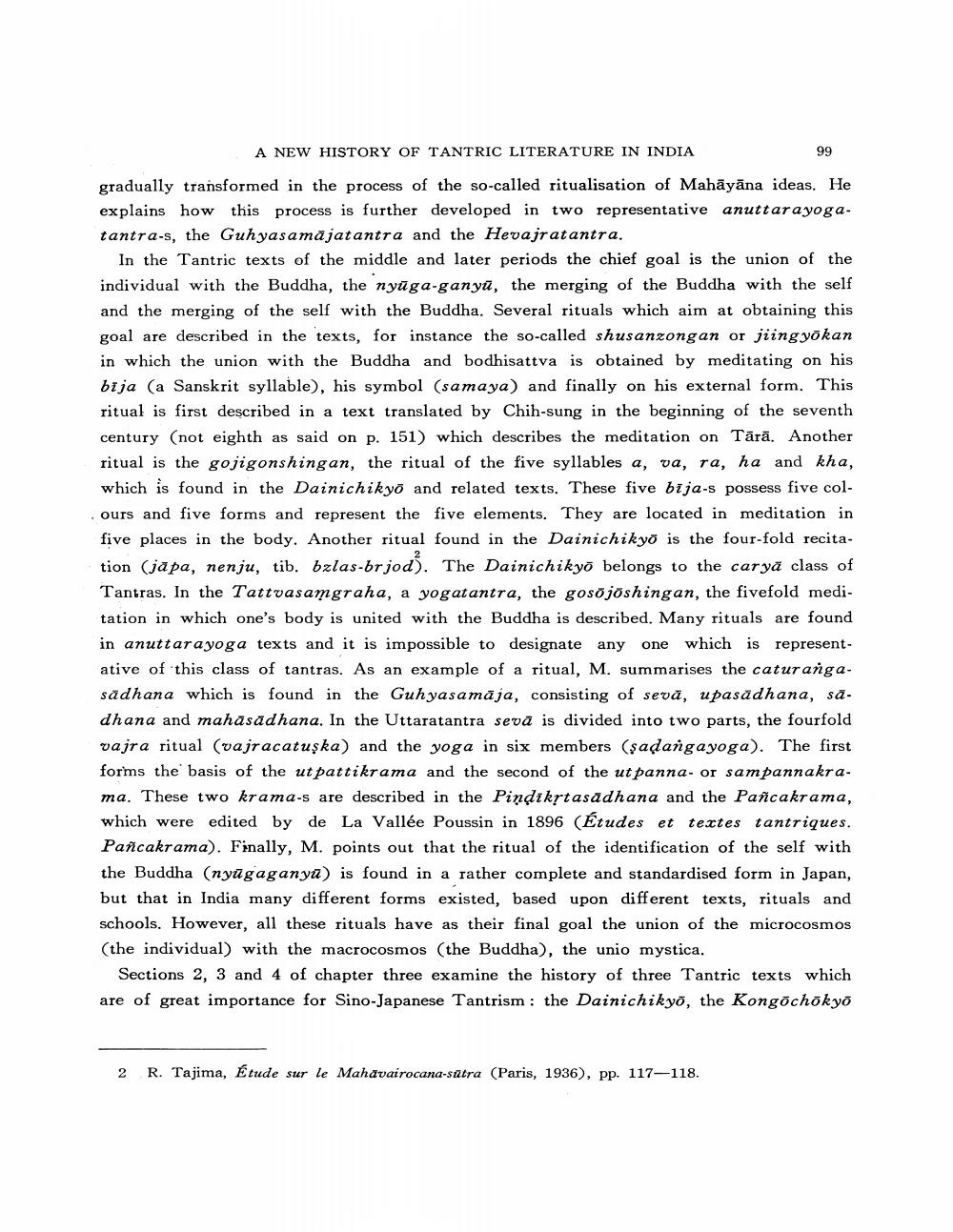________________
A NEW HISTORY OF TANTRIC LITERATURE IN INDIA
99
gradually transformed in the process of the so-called ritualisation of Mahāyāna ideas. He explains how this process is further developed in two representative anuttara yogatantra-s, the Guh yasamajatantra and the Hevajratantra.
In the Tantric texts of the middle and later periods the chief goal is the union of the individual with the Buddha, the nyűga-ganyű, the merging of the Buddha with the self and the merging of the self with the Buddha. Several rituals which aim at obtaining this goal are described in the texts, for instance the so-called shusanzongan or jiingyökan in which the union with the Buddha and bodhisattva is obtained by meditating on his bija (a Sanskrit syllable), his symbol (samaya) and finally on his external form. This ritual is first described in a text translated by Chih-sung in the beginning of the seventh century (not eighth as said on p. 151) which describes the meditation on Tārā. Another ritual is the gojigonshingan, the ritual of the five syllables a, va, ra, ha and kha, which is found in the Dainichikyo and related texts. These five bija-s possess five colours and five forms and represent the five elements. They are located in meditation in five places in the body. Another ritual found in the Dainichikyo is the four-fold recitation (jāpa, nenju, tib. bzlas-briod). The Dainichikyo belongs to the caryā class of Tantras. In the Tattvasamgraha, a yogatantra, the gosõjóshingan, the fivefold meditation in which one's body is united with the Buddha is described. Many rituals are found in anuttarayoga texts and it is impossible to designate any one which is representative of this class of tantras. As an example of a ritual, M. summarises the catur angasadhana which is found in the Guhyasamāja, consisting of sevā, upasādhana, sadhana and mahasādhana. In the Uttaratantra sevā is divided into two parts, the fourfold vajra ritual (vajracatuşka) and the yoga in six members (şadanga yoga). The first forms the basis of the ut pattikrama and the second of the utpanna- or sampannakra. ma. These two krama-s are described in the Pindikstasadhana and the Pancakrama, which were edited by de La Vallée Poussin in 1896 (Études et textes tantriques. Pancakrama). Finally, M. points out that the ritual of the identification of the self with the Buddha (nyugaganya) is found in a rather complete and standardised form in Japan, but that in India many different forms existed, based upon different texts, rituals and schools. However, all these rituals have as their final goal the union of the microcosmos (the individual) with the macrocosmos (the Buddha), the unio mystica.
Sections 2, 3 and 4 of chapter three examine the history of three Tantric texts which are of great importance for Sino-Japanese Tantrism : the Dainichikyo, the Kongochokyo
2
R. Tajima, Étude sur le Mahavairocana-satra (Paris, 1936), pp. 117-118.




